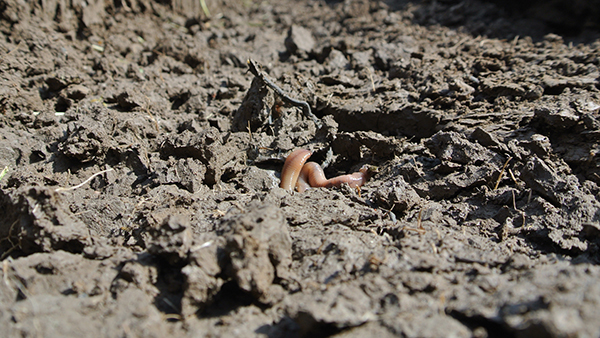Subsoil = is that part of the soil profile that comes directly under the topsoil and is often unaffected by normal soil tillage to ploughing depth, but is sometimes tilled by deep loosening. The boundary between topsoil and subsoil is often clearly visible in ploughed soil as a plough pan, where plough shares and tyre slip have compacted the soil
Pores = are the spaces, channels and cracks in the soil, which are filled with either water or air depending on the actual water content of the soil.
Dry bulk density = is also called volume weight and refers to the weight of the soil in relation to its volume, including the air-filled spaces, once the soil has been dried to 105°C.
Worm casts = faeces/waste from the intestines, which in the case of earthworms is often visible as small heaps around the opening of worm channels at the soil surface.
Nitrate = plants normally take up the majority of the nitrogen they require as nitrate, NO3- which is a form of nitrogen that is found in the soil and also in mineral fertiliser. In the soil, specialist bacteria transform ammonium, NH4+, via nitrite, NO2- into nitrate. This process is called nitrification.
Read more









